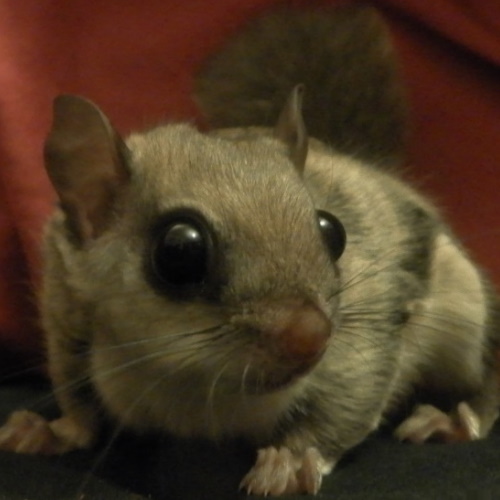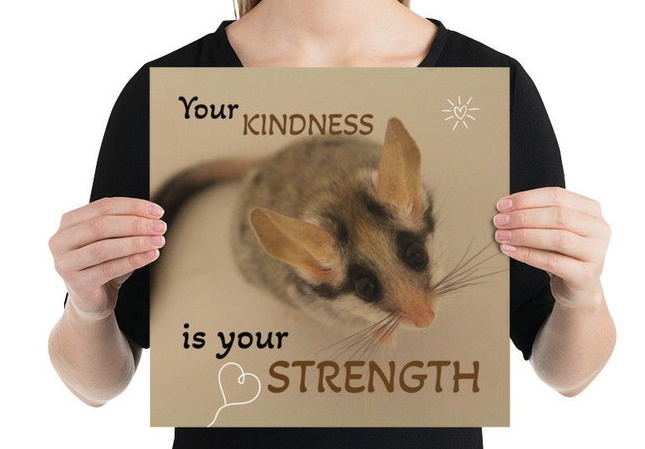How to Furnish a Vivarium for an Exotic Rodent
Author: Christine, of Crittery Exotics
The habitat you are creating for your exotic rodent may be either height or length based. African Pygmy Dormice and Harvest mice for instance should have an arboreal vivarium whereas a Zebra mouse would be happier in a large wide tank with a mesh lid for ventilation. Either way, the furnishings and equipment available to you is much the same.
As always, go for the largest you can afford. A 4ft Vivexotic Vivarium is a good choice for African Pygmy Dormice; the cheaper Exo Terra can be good for harvest mice. Remember to add a temperature gauge if using a vivarium as since they are designed primarily for reptiles you must make sure your rodent is kept at the right temperature. A dormouse vivarium should always be above 21℃ to prevent a state of torpor.
Vivariums that have been already furnished for rodents such as the Montana Vivario 80 Rodent Vivarium tend to be quite expensive. They also market as being suitable for Rats or Degu which is incorrect - they do not offer enough space or ventilation for these species.
You also have the option of building the vivarium yourself if you are good at DIY.
Remember if you have thoroughly done your research and chosen to breed your rodents you must have safe, dark areas for the female to be comfortable nesting in. Keep track of any matings you witness so you know when you should avoid disturbing the nest in case of babies.
Food and water dishes
These can be normal ceramic pet dishes but may become contaminated swiftly if left on the vivarium floor. Shallow dishes such as those created primarily for reptiles are suitable though the price-tag can be high.
Water should either be placed high up in the rodents vivarium or tank, to prevent faeces falling in, or concealed under a structure such as curved wooden play-stix. You may want to consider adding a permanent ledge somewhere midway up your vivarium to place dishes on, if you decide to do this you will want to spray several layers of a pet friendly substance such as plasticote that will give them a coating that makes cleaning easier.
Small water bottles without ball bearings are also a good choice. Ones with metal balls are generally not suitable as some of the smaller exotic rodents cannot use these.
You can also experiment with hanging ceramic dishes made for birds, or hanging items like monkey nuts or sprays of millet directly from branches.
Live food dispenser for placing live crickets in for your pets can provide excellent enrichment, Mealworms can be placed in a shallow dish, or obtained dried if you don't want to deal with them live.
Branches
There are a range of reptile logs and vines available, some of which are furnished with fake foliage. Another option is to buy branches designed for birds and secure against the side of your tank of vivarium.
Branches can also be collected from your local wood. First check that the tree you will be getting branches from is safe for rodents. You can obtain wood from nearby forests providing it has already fallen from the tree. Before giving it to your rodent place it in the oven at around 200 degrees Celsius for about 20 minutes - this will kill any bacteria or fungi. Holes can be drilled into these, or hooks attached to give good hanging places for ropes or nests.
Toys
A silent spinner wheel is essential for rodents, and must be solid based not barred as tails can easily get trapped. A small size is fine for a harvest mice or African Pygmy Dormice enclosure but a habitat for Zebra mice should include the medium size.
The flying saucer type wheel is also good for the larger exotics.
Nests
You should provide as many nests and hiding places as you have rodents in your setup. Hollow logs and coconuts make good hideouts, as well as wooden bridges. Terracotta plant pots double as a cool shady area for your rodent in the warmer months.
Grass and woven nests suitable for garden birds can be hung from your branches. If they have only one exit hole, your rodents are quite likely to chew a second. Make sure the exit holes are quite small, large nesting boxes will not be so popular. Although they need frequent washing and will be chewed, fleecy nests are also a good idea and many rodent specific ones will be made with two exit holes to limit chewing. You need as many nests as you have animals in your habitat. If you have harvest mice, hollowed tennis balls make a good nest and providing you give them the materials they can also construct their own.
Furnishing
If buying fake plants bear in mind that your rodents are likely to chew them and they must be pet-safe. These can be attached to branches, and some will have suckers to place against the sides of your tank of vivarium. These help your rodents habitat feel more at home and safe by giving valuable hiding space.
Sisal rope is a cheap, rodent friendly option to provide climbing material and help attach other items. Rope toys designed for parrots and cargo nets intended for rats and ferrets also provide good climbing material.
As well as toilet rolls and wooden logs, clear plastic tubes can be hung around your habitat. These are useful for watching your rodent as they feel concealed inside but allows you to still view them.
Bedding and Substrate
Nothing sawdust or pine or cedar based as these can cause serious respiratory problems in rodents. A good substrate such as megazorb, finacard, bedexcel or carefresh is good. You will also need a layer of hay since this is useful for nest making, hiding, and chewing aids digestion.
A pet safe paper based bedding is good. Cotton pods are the most enriching, since they provide valuable chewing and once opened allow your exotic rodents to spread their own nesting material around their habitat.

Christine
Christine runs Crittery Exotics and is an experienced animal keeper & content writer.
About Crittery

